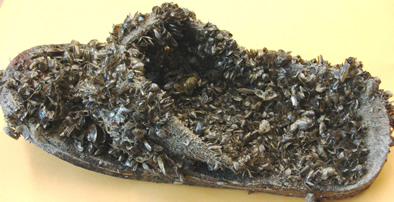Quagga Mussels on the Lower Colorado River
Parker Dam Activities
Parker Dam is the most heavily mussel-colonized Reclamation dam on the lower Colorado River. Heavy colonization began in late 2007, and in early 2008, the population of quagga mussels was large enough to plug the dam's domestic water line and foul the water surrounding the generator seals. The gates on the dam's spillway were also heavily colonized. An aggressive mussel management program was implemented at Parker Dam in early 2008. Actions include:

In addition, copper-containing metals and other metal coatings -- such as galvinizing or metalizing, anti-fouling, and easy release coatings -- are being tested at Parker Dam to determine their effectiveness in preventing mussels from attaching to different surfaces. Similar research is underway at Central Arizona Project and Metropolitan Water District of Southern California facilities on Lake Havasu, and in Reclamation’s laboratory facilities in Denver. |
Webmaster: sha-lcr-webcomments@usbr.gov
Updated: December 2008

